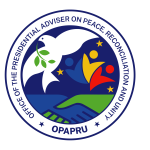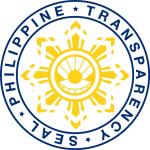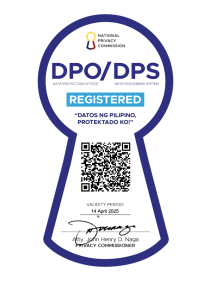INTRODUCTION
For the past 30 years, the Government of the Philippines (GPH) has been engaged in peace negotiations with the Communist Party of the Philippines/New People’s Army/National Democratic Front (CPP/NPA/NDF or CNN) in the hope of attaining a negotiated political settlement that would end the armed conflict and lay the foundations for a just and lasting peace. Since 1986, over 40 rounds of talks have been conducted and were disrupted over 15 times due to such contentious issues as sovereignty, prisoner releases, and terrorist listing. Over 1,300 alleged political offenders were released by government as goodwill and confidence building measures. Twenty (20) agreements, most of which are joint statements/communiqués, have been signed. Yet, the GPH and CNN are nowhere near a final peace settlement. Only one (1) of the four (4) substantive agreements comprising a peace settlement — the Comprehensive Agreement on Respect for Human Rights and International Humanitarian Law (CARHRIHL) – has been signed. That was 18 years ago and the Agreement took two (2) years to complete.
When President Benigno Simeon Aquino III assumed office, the GPH-CNN negotiations were at a seven-year impasse and trust levels at an all-time low. Yet, the peace negotiations that began in 2010 between his Administration and the CPP/NPA/NDF began auspiciously. The new GPH Panel chaired by Department of Health (DOH) Undersecretary Alexander Padilla was well received. Within the first six (6) months, the GPH and CNN Panels quickly reconnected, built goodwill, held two (2) preliminary meetings, agreed on side tables to discuss contentious issues like releases, made possible the longest ever Christmas ceasefire that lasted 27 days, and set a date for the resumption of formal talks.
IMPASSE BROKEN: OSLO FORMAL TALKS, 15-21 FEBRUARY 2011
The resumption of formal talks was highly anticipated and both sides released detained persons as confidence building measures and observed a suspension of offensive military operations for the duration of the talks. The talks were held in Oslo, hosted and facilitated by the Royal Norwegian Government (RNG), the official Third Party Facilitator. The Oslo Joint Statement (2011 OJS), signed on 21 February 2011, documented, among others, a) both sides’ affirmation of past agreements, with the GPH issuing qualifications and the NDF a rebuttal; b) an accelerated 18-month timeframe with acceleration mechanisms like Working Groups for completion of the remaining substantive agenda on socio -economic reforms (SER), political and constitutional reforms (PCR) , and end of hostilities and disposition of forces (EOH-DOF); c) schedule of meetings of the CARHRIHL Joint Monitoring Committee (JMC), Reciprocal Working Committees on SER (RWCs-SER), and Working Groups on PCR (WGs-PCR), all leading up to the next round of formal talks; and d) GPH commitment to work on releases of “all or most” of 18 NDF claimed consultants and personalities, ‘before the second round of formal talks and subject to Joint Agreement on Safety and Immunity Guarantees (JASIG) verification, or for humanitarian or other practical reasons”.
NDF DEMAND FOR RELEASES AND JASIG VERIFICATION, MAY-JULY 2011
But just four months after Oslo, the goodwill crumbled as the NDF Panel unilaterally postponed committee meetings until their claimed consultants and personalities were released. The GPH disagreed since releases were subject to conditions under the 2011 OJS. The required JASIG verification process was conducted but failed to validate that the claimed consultants were in fact among those using pseudonyms in the JASIG list. This was due to the NDF’s own fault — instead of depositing actual photos as required, the NDF had uploaded and encrypted them into diskettes and could not decrypt them.
RETURN TO IMPASSE
With the failure of verification, the GPH took the position that JASIG was operative only for those in the JASIG list using real names and those already known as direct participants in the talks. Any releases would be confidence-building measures (CBMs). Nine of the 18 claimed consultants were released, yet all subsequent efforts to reschedule the committee meetings were thwarted by continued NDF demands for more releases. The NDF raised other issues and went into a media frenzy, resorting to insults and name-calling, and accusing the GPH of delaying the talks. The RNG tried to break the impasse by hosting informal talks in 2012 but the two sides merely signed a short statement saying they had meaningful discussions. Soon after, the NDF reiterated its call for the Government to release their claimed consultants before the talks could resume. The Regular Track of peace negotiations had become immovable and from this point on, hopes for forward movement shifted to a sequence of different initiatives.
THE SPECIAL TRACK (ST) (2011-2013)
The GPH responded positively to a January 2011 proposal from Jose Maria Sison to pursue a parallel Special Track (ST) towards an “Alliance and Truce” with six (6) elements: a Common Declaration of National Unity and Just Peace, an Advisory Committee to promote the alliance, an immediate truce including economic self-reliance for fighters, actions to strengthen national independence, land reform, and industrial projects. Though linked to the Regular Track, the proposal had doable elements and allowed forward movement without preconditions. Discussions between GPH and NDF ST Teams prospered up to an official exchange of drafts of the Common Declaration in December 2012, with an agreement to attempt a common draft at the February 2013 meeting. But at that meeting, the NDF presented a new set of documents that changed the agreed process, expanded the issues, and set unacceptable preconditions for the immediate implementation of the ceasefire provided in the draft Common Declaration. By violating the previous agreement, the NDF effectively rendered the ST no longer viable.
EMISSARY TEAM (ET) INITIATIVE (2014-2015)
Between July 2014 and February 2015, a team of private emissaries discreetly and unofficially engaged Mr. Sison and NDF Panel members to assess their continuing claims of readiness to talk. Discussions to revive talks without preconditions beginning with an Interim Peace Agreement, an agenda along the lines of the ST, a nationwide truce, and a roadmap to political settlement within the current administration, were initially positive. But the NDF roadmap proposals evolved to incorporate the release of claimed NDF consultants as a prerequisite to substantive committee discussions and the truce declaration. In the end, the initiative could not progress further for the same reasons that had led to impasse – the NDF handed a list of demands mostly related to release of prisoners.
RNG INITIATIVES (2015)
Following the emissary team initiative, the RNG offered proposals for trust-building to break the impasse. First, a secret informal meeting for the two (2) sides to see if they could come to a common understanding and agree on parameters for resumption and, second, the pursuit of goodwill gestures by both sides to benefit the people. Unfortunately, neither initiative prospered.
ELUSIVE PEACE SETTLEMENT
As the Administration of President Benigno Aquino comes to a close, the GPH-CNN negotiations are back to where they began in 2010 – at an impasse, and for the very same reasons as in the past. The NDF’s precondition of the release of prisoners before returning to the table made the attainment of a negotiated political settlement a remote possibility. This and other NDF demands prevented progress in alternative tracks that, it had been hoped, might produce even interim agreements. In turn, substantive negotiations that could address key conflict drivers, whether in the regular or alternative tracks, never took place.






